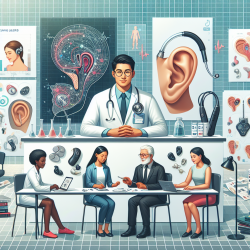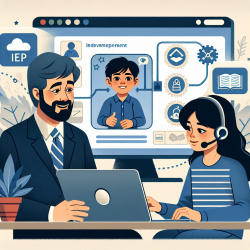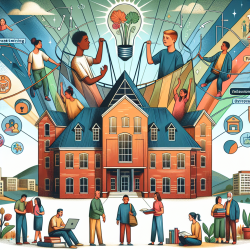Introduction
In the realm of speech-language pathology, data-driven decisions are paramount to achieving optimal outcomes for children. As practitioners, we continually seek to enhance our skills and methodologies by integrating insights from diverse research fields. A recent qualitative study, "Sick and Solo: A Qualitative Study on the Life Experiences of People Living with HIV in Somalia," provides valuable lessons on stigma and discrimination that can be applied to our practice, especially in the context of online therapy services for children.
Understanding Stigma and Its Impact
The study conducted in Somalia highlights the pervasive stigma faced by people living with HIV (PLHIV), leading to self-isolation and reluctance to seek treatment. This stigma is not only a barrier to healthcare but also affects social interactions and mental well-being. As speech-language pathologists, understanding the impact of stigma can help us create more inclusive and supportive environments for children who may face similar challenges, albeit in different contexts.
Applying Research Insights to Online Therapy
Here are several ways practitioners can apply the insights from the study to improve online therapy services:
- Promote Inclusivity: Develop therapy sessions that foster a sense of belonging and acceptance. Encourage children to express themselves freely without fear of judgment.
- Educate and Raise Awareness: Use therapy sessions as an opportunity to educate children and their families about the importance of empathy and understanding towards individuals facing stigma.
- Enhance Communication: Equip children with communication tools that help them articulate their feelings and experiences, thus reducing the internalization of stigma.
- Encourage Parental Involvement: Engage parents in the therapy process to ensure they are aware of the challenges their children might face and how to support them effectively.
Encouraging Further Research
While the study provides a foundational understanding of stigma's impact, further research is essential to explore its nuances in different cultural and social settings. Practitioners are encouraged to conduct studies that examine the intersection of stigma, communication disorders, and online therapy to develop targeted interventions.
Conclusion
By integrating insights from diverse research fields, such as the study on HIV stigma in Somalia, speech-language pathologists can enhance their practice and create more supportive environments for children. These efforts not only improve therapy outcomes but also contribute to a more inclusive society.
To read the original research paper, please follow this link: Sick and solo: a qualitative study on the life experiences of people living with HIV in Somalia.










